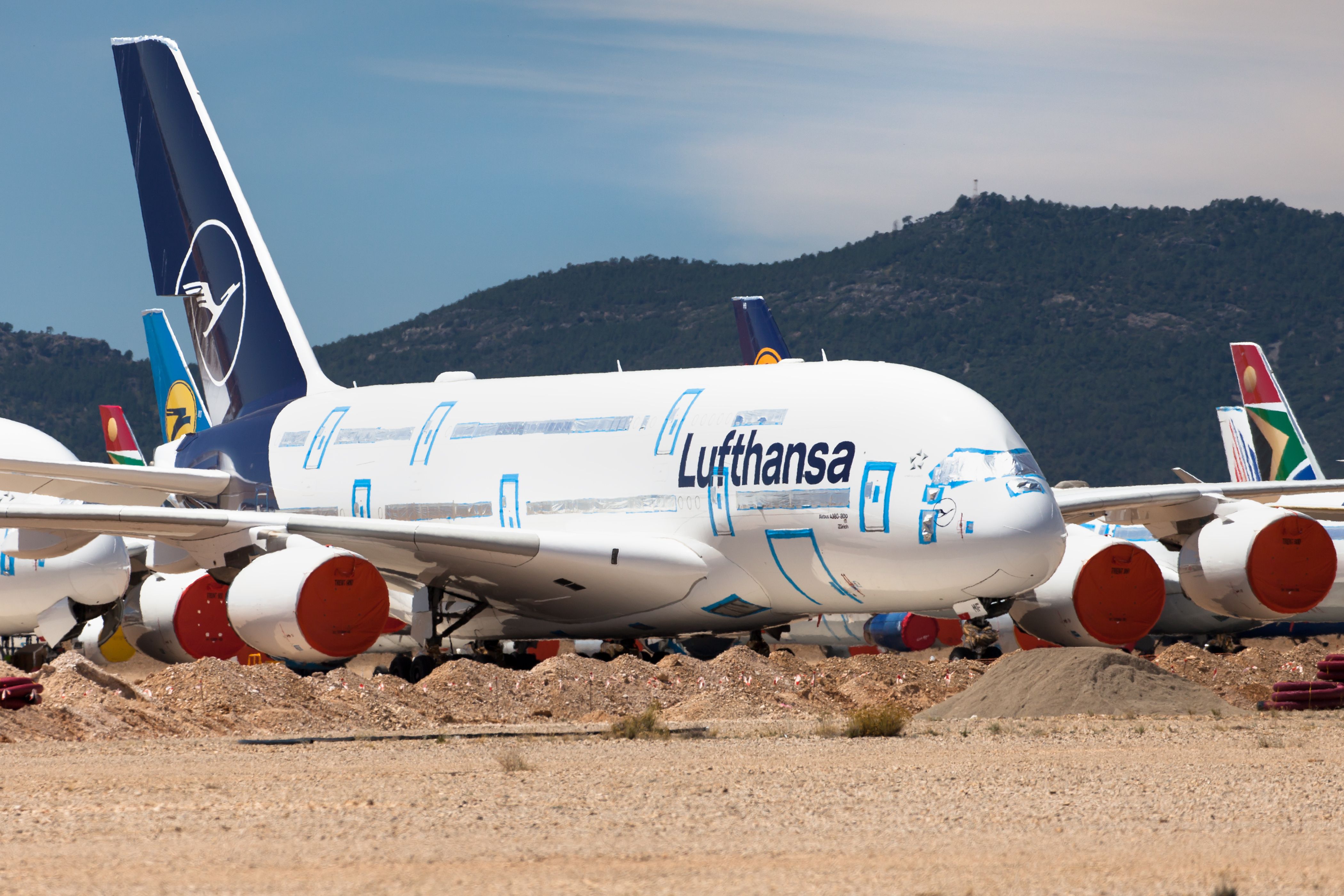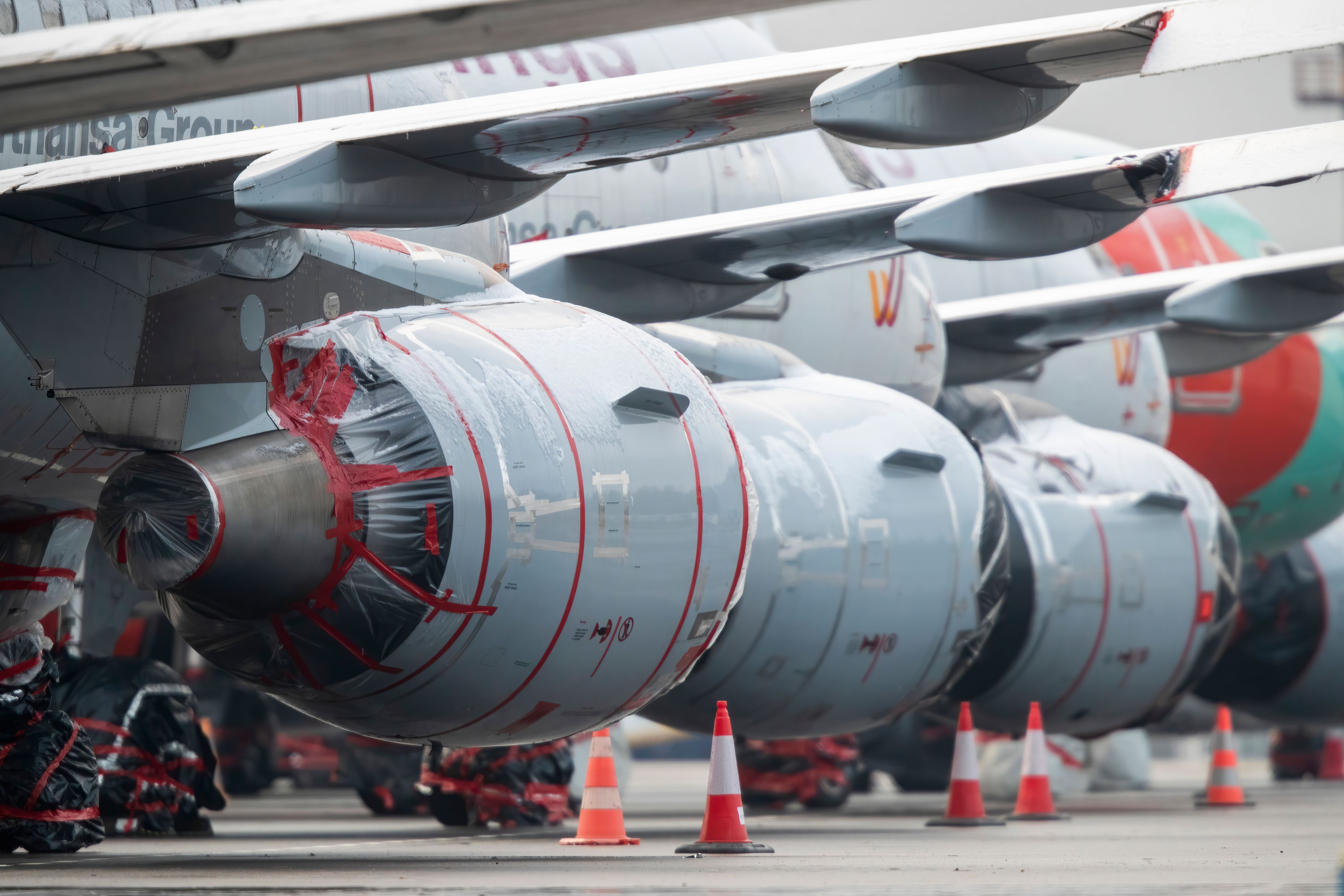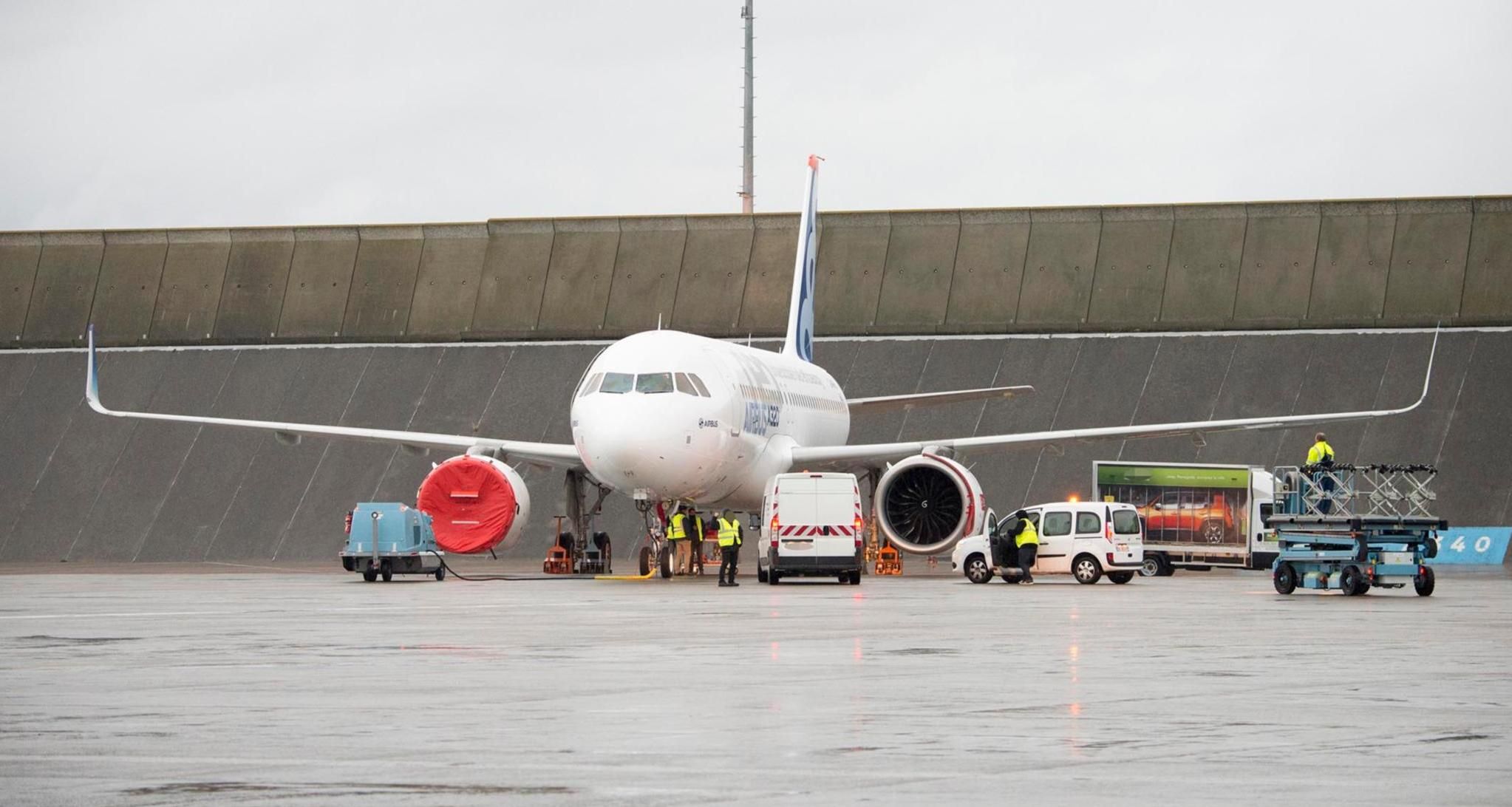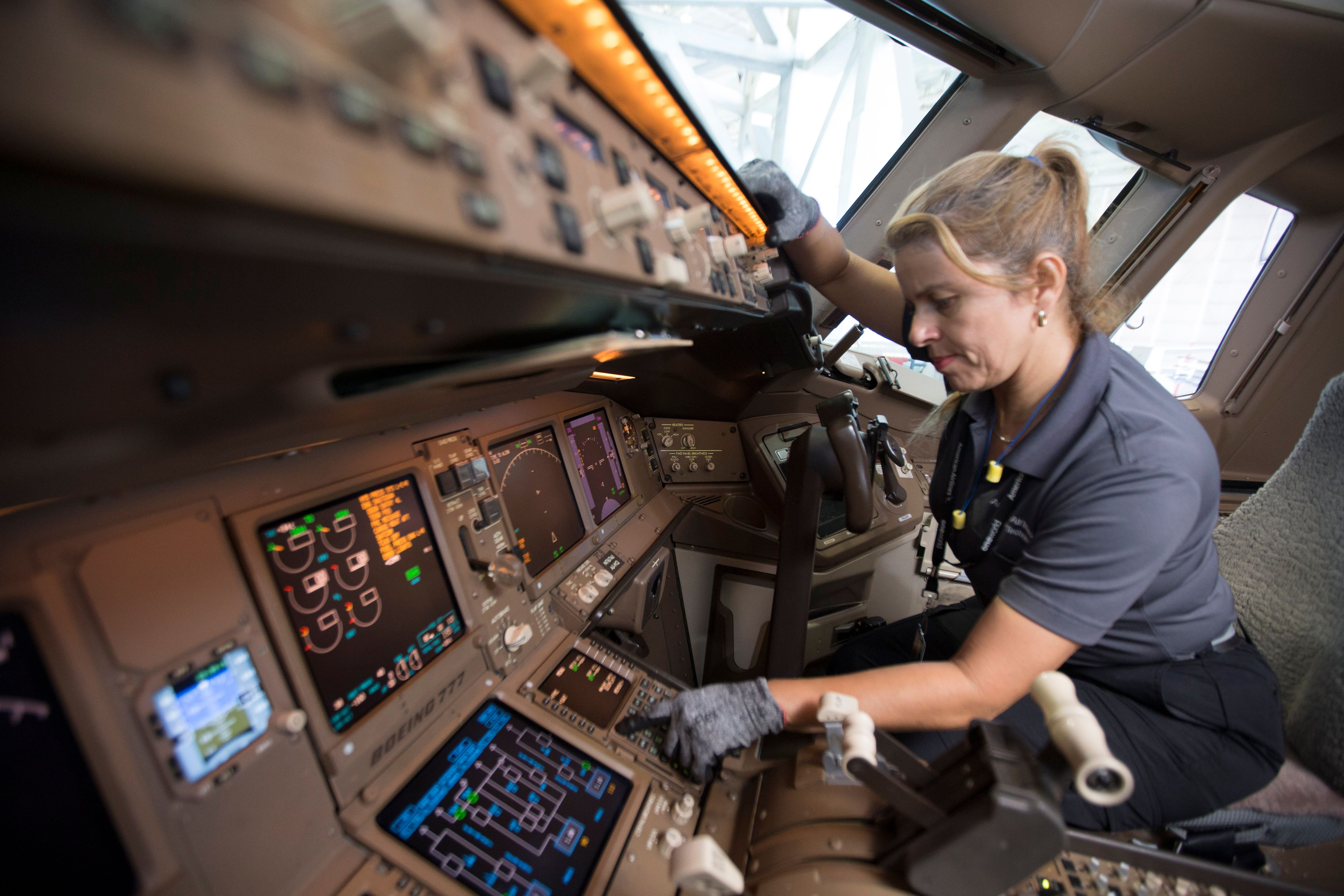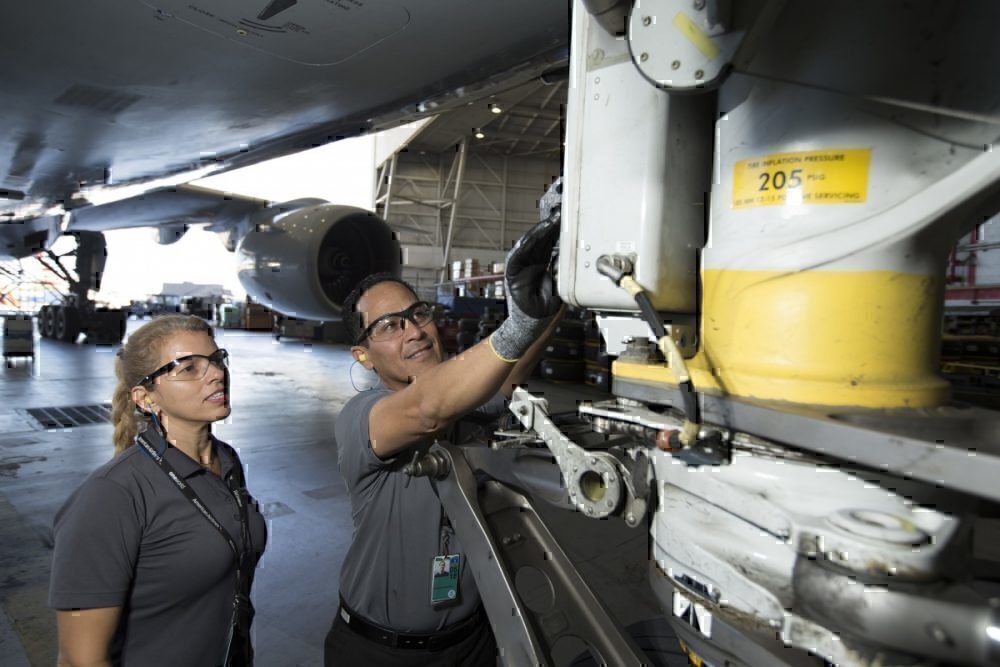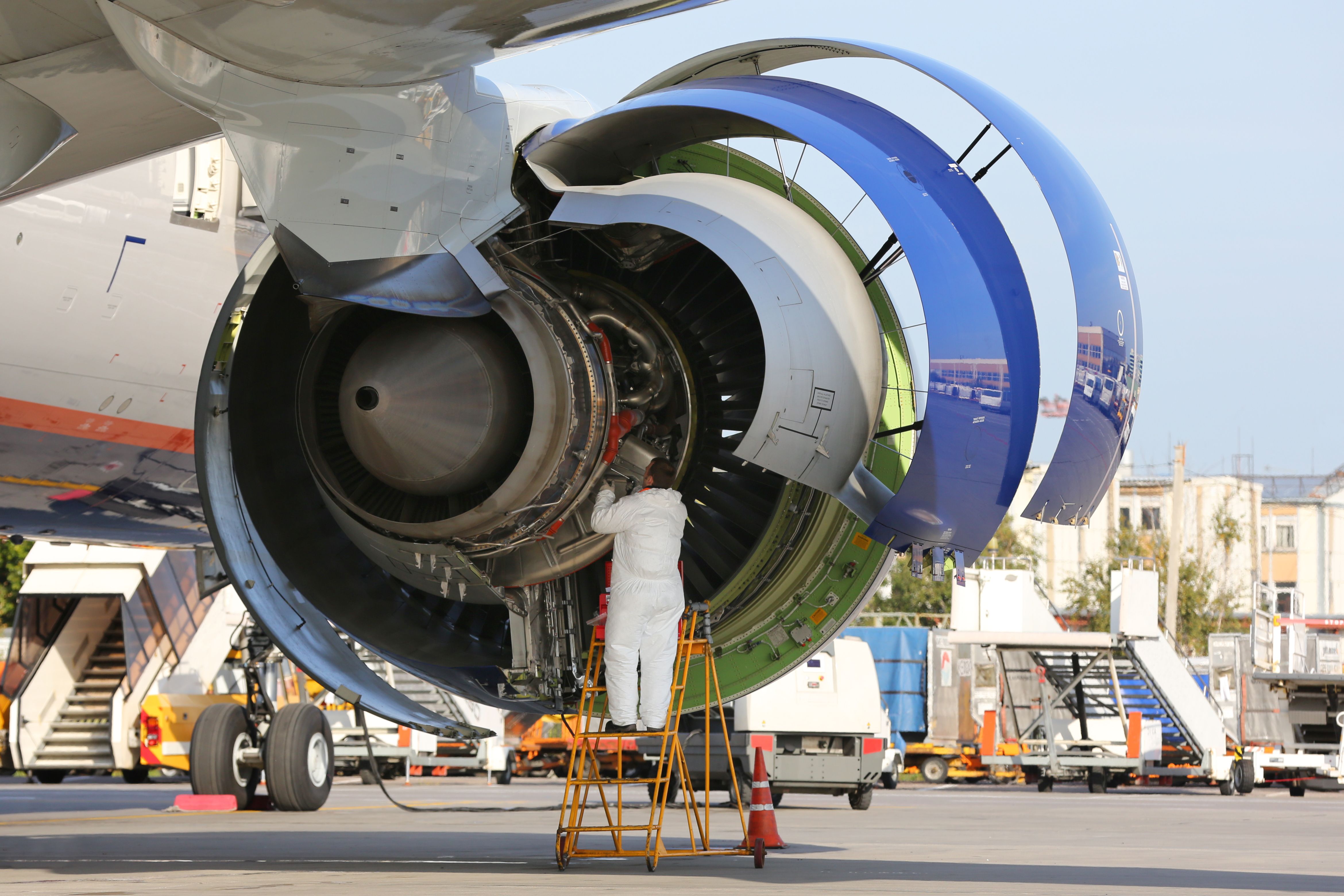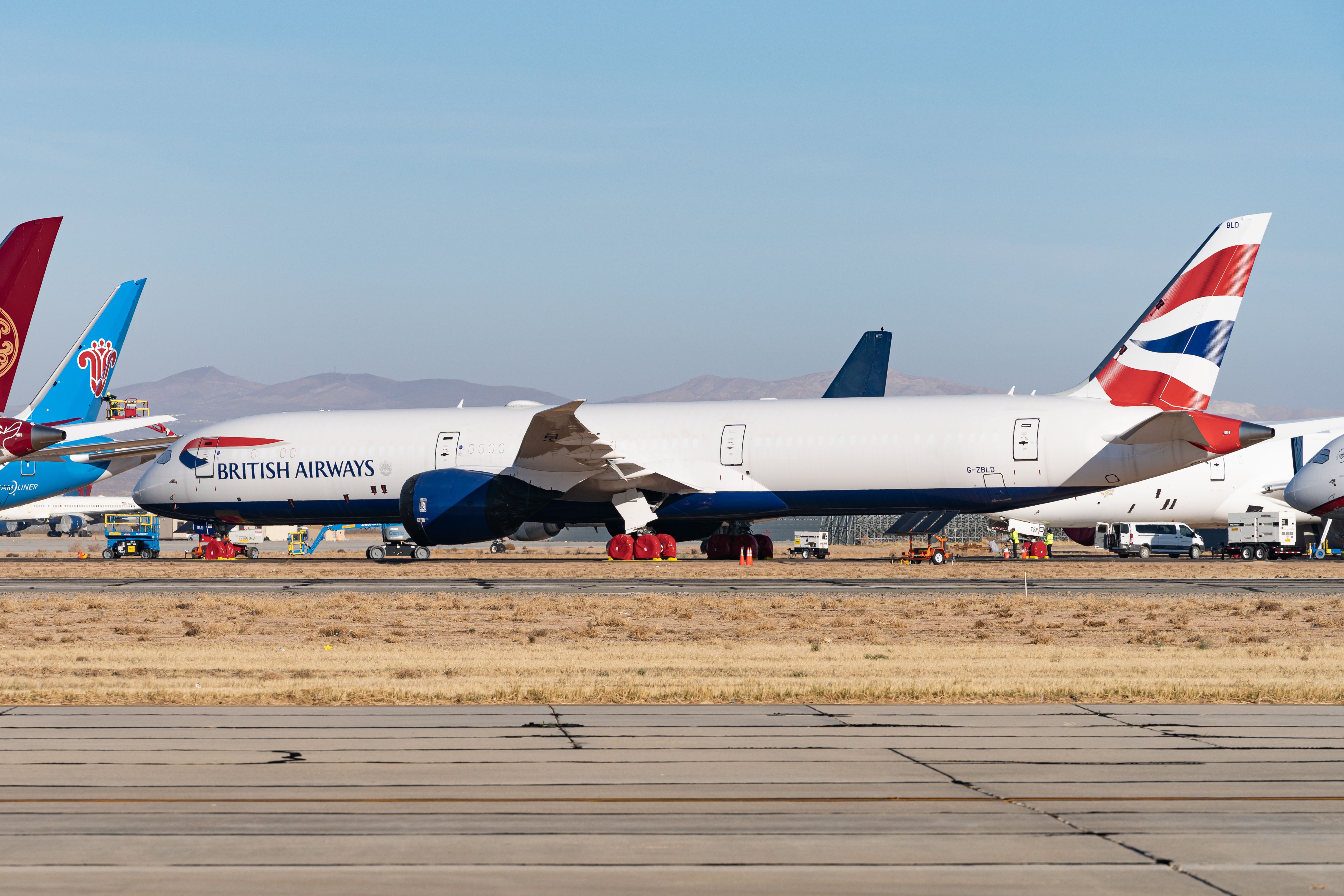The logistics around entering and exiting the long-term aircraft storage grabbed all the headlines during the peak of the COVID-19 pandemic. The airlines were putting their fleet into storage left, right, and center.
Putting an aircraft into storage is not as straightforward as parking a car in a long-term parking lot. It requires a comprehensive set of processes before, during, and at the time of exiting the storage.
Before jumping into the details of the aircraft storage exit process, it is important to understand the difference between short-term storage and long-term storage. During short-term storage (also known as active storage), the aircraft is regularly maintained by either the maintenance technicians on-site or the personnel from the aircraft operator. The engines are not covered, and they are periodically run to a certain amount of power.
Weekly or bi-weekly checks are performed, particularly on the engines and avionics, to ensure all systems are functioning. While short-term storage does not generally require the covering of aircraft windows, the extent of coverage remains the decision of the operator and the terms of the contract. The aircraft in short-term storage can be put into service on short notice. For example, a seasonal demand may bring back a stored aircraft on short notice.
Photo: Santi Rodriguez | Shutterstock
Long-term storage is when the aircraft is covered and security to a greater extent, and no periodic maintenance is performed. The commercial aviation downturn as a result of the pandemic saw hundreds of aircraft in long-term storage facilities worldwide. Protective coverings are applied on engines, windshields, windows, and other critical openings prone to environmental damage during storage.
Batteries and power lines are disconnected before storing the aircraft. Critical electrical systems (avionics) are removed from the aircraft and stored separately. All oil and fuel storage tanks and lines receive special treatment before shutting down systems for storage. Long-term storage facilities do provide routine checks on the aircraft to ensure it remains in good condition.
Photo: Karolis Kavolelis / Shutterstock
While there is no specific duration for short-term or long-term storage, it depends on how much the operator is willing to spend as a result of taking the aircraft out of service. It is noteworthy that not all aircraft generally go back to the airlines from storage, particularly long-term storage.
Some units may be returned to the lessors, while others may get scrapped for parts. This article highlights five key processes that are essential for aircraft when exiting long-term storage.
1
Removal of protective covers
Protective coverings made of specialized reflective material are used on several external and internal parts of the aircraft. Protective covers prevent environmental damage and also keep debris from entering the aircraft.
Moreover, capping and covering all plugs and lines prevent animal and insect infestation. Covers are also removed from engine inlet, exhaust, and drains.
Maintenance personnel use a checklist to ensure all external protection is properly removed. On the inside of the aircraft, tapping on the windows (again, to prevent sunlight from damaging the interior) is removed. Plastic coverings from the seats and sheets on the floor are removed. Protections are also removed from critical sensors and gauges, including angle of attack sensors, pitot tubes, pressure sensing tubes, and temperature sensors.
Photo: Airbus
Protective covers and plugs are also removed from drain, oil, and hydraulic lines. Protective tape is also removed from landing gear components and aircraft control surfaces, including flaps, ailerons, and stabilizers. Maintenance personnel ensure that the aircraft is back in the same physical condition before continuing the process.
2
Installation of components
All components that were removed from the aircraft during the storing process are installed in accordance with the Aircraft Maintenance Manual (AMM). These generally include avionics, plugs, panels, batteries, and the auxiliary power unit (APU) on the engine. It is noteworthy that the removal of specific components can vary based on the aircraft, the environment in which it is stored, and the customer requirements.
Photo: American Airlines
The systems are switched on using the APU or, in some cases, the Ground Power Unit (GPU). Avionics engineers ensure that all systems are not back on the required amount of voltage and current pass through all circuits. Some systems may require a hard reset, depending on how long the systems were switched off. Various critical cockpit switches are also turned on for static testing.
3
Cleaning and inspections
The landing gears, including wheelbases, tires, and brakes, are cleaned and inspected for repairs or touch-ups. Landing gears are one of the components that are routinely maintained during long-term storage. Maintenance personnel frequently check tire pressure to ensure the aircraft stays on its “feet” without warping or bulging due to the aircraft weight. The landing gear bearings are lubricated. Moreover, hydraulic fluids are checked and added if required.
Photo: American Airlines
Control surfaces are also cleaned and inspected for any apparent wear or damage. Minor repairs or touch-ups are performed if required. Control surfaces are also moved manually to check for corrosion and wear in all areas. Maintenance personnel also perform a walk around the aircraft, similar to a pre-flight check to look for any apparent damages.
4
Engine start up
Once all protections are removed from the engines, and they have been inspected for apparent damage, it is time to power the engines. The APU or the GPU is used to power one engine at a time. The engines are initially run to a certain power, and all systems are checked. Critical engine sensors, including temperature, pressure, and oil gauges, are checked for conformance. The engine oil and fuel gauges are tested for serviceability.
Photo: Fasttailwind | Shutterstock
Critical parameters are monitored for a set duration to ensure all electrical, pneumatic, and hydraulic systems are functioning. A mini trend-monitoring routine may be run on the engine to ensure the required amount of thrust can be achieved. Moreover, pressure and temperature readings at carrying static RPMs are monitored for performance verification.
5
Final prep, and off it goes
Given that all systems are functional in accordance with the aircraft’s operability criteria, it is time to perform final preparations and waive the aircraft goodbye. Depending on the storage facility and the services offered, the aircraft may be towed to a wash bay. The aircraft is fueled up for its ferry flight to wherever it is destined to go. Similarly, the interior of the aircraft is prepared for flight.
Photo: Vincenzo Pace | Simple Flying
Some aircraft storage facilities may also provide paint services for minor areas of the aircraft. Prior to the ferry flight, all paperwork, including regulatory certifications and warranties, is provided to the customer. All storage dues are either cleared or arrangements are made between the parties. With a handshake in the office and a wave of hand on the tarmac, the aircraft flies off to get back to business.
What are your thoughts on the primary steps required to bring the aircraft back to life from long-term storage? Have you experienced working on an aircraft? Tell us in the comments section.


